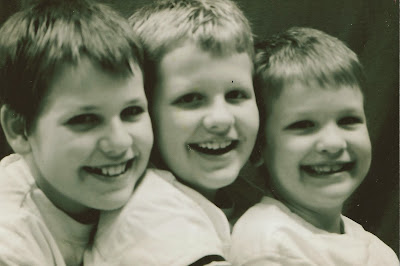 |
| When "littles" have routines and consistency, every day can be a joy! |
Yesterday I introduced the concept of the morning routine for all children. Today I would like to spend time on helping parents develop morning routines for their preschoolers. Tomorrow I will address older children and teens in this area.
I mentioned that a mom at a parenting seminar taught us about morning routines when we only had first graders and under. As she explained developing this routine, she showed her littles’ morning routine chart—a darling “board game” that she made on half sized poster board with every other square of the “Candyland” type of board containing a picture of something that the child needed to do in the morning—a child dressed; a child making his bed; a child putting his pj’s away; etc. It was so sweet—and we came home and promptly made “morning routine board game charts” for all of our kids who were old enough to follow the board and do a morning routine. (We used little people/animals with that tacky stuff placed on the bottom of them for the child to take around the board as he does his morning routine. These boards hung on the refrigerator, so it was important that the little pieces were lightweight and stuck well when the child put them on a square.)
Here are some additional tips for implementing morning routines with your little ones:
1. Timing each activity before setting the morning routine time is more important with this age group than any other. Small children can get discouraged if things seem to take too long—and a timer and reporting back to you while developing the time for the morning routine will help him see that this morning routine is truly doable.
2. Consider making a game board like the one described above, with pictures of children on them for your non-readers. (We wrote the task at the bottom of each picture, so the child had the picture as well as the words.)
3. You know your little ones better than anybody. Only put in the morning routine what your child can truly go do fairly independently. Start out small with just a few tasks and then increase as his responsibility and diligence increase.
4. If an entire morning routine chart would overwhelm your young kids, consider an 8 ½ x 11 inch piece of tag board divided into four equal quadrants. In the upper two, put GROOM and ROOM; in the bottom two, put DRESS and MESS. Start with the upper left hand square and work towards getting that part done without complaining and dilly dallying. This GROOM one might include washing face and hands, brushing teeth, combing hair (or coming to Mom with brush and ponytail rings to have her fix your hair). Once that is well underway, add the ROOM one—and have him straighten his room and make his bed in the morning. Continue in this way until all four quadrants are part of his morning schedule. (You can laminate this and have him X each quadrant with a white board marker as he finishes it each day.)
5. Be consistent. If you say that morning routines will be done before breakfast—and before the television is turned on, then follow through. As soon as you start varying from the plan (letting him watch a cartoon when his morning routine isn’t finished, etc.), the morning routines will go by the way. He needs to see that you are serious about helping him learn diligence, responsibility, time management, obedience, and more by being consistent with his morning routine.
6. As mentioned yesterday, consider something fun, like a first-thing-in-the-morning story to get your little ones moving—then do the morning routines.
7. Only put things on the morning routine chart for this age that truly must be done in the morning. You do not want to fill the morning with so much activity that it cannot all be accomplished. Anything that can be done ahead of time, such as packing backpacks, laying out clothes, making sandwiches for lunch, etc. are better off done the night before rather than trying to cram too much into the morning.
8. Develop consistent morning routines for yourself. We can’t sit down with coffee and the morning show in our robe while expecting our children to be doing their morning routines. Modeling goes a long way in teaching thoroughness, time management, and much more.
9. Rewards and encouragement go a long way for this group!
I think back nostalgically to the days of five littles nine and under—all learning how to work, become organized, and more via morning routines. They were so proud of their morning routine game boards and would often take visitors to the fridge to show them and tell them what their early mornings consist of. Two of our little ones even did recitations at a “homeschooling expo” in which they showed their charts and told the audience what they did each morning when they got up. Wowsie…that makes me smile…with a few tears of longing mixed in.
Note: We used Choreganizer chore cards to develop our preschoolers' morning routine charts (available at http://www.rainbowresource.com/proddtl.php?id=018244). Clip art programs would also work well for obtaining pictures to use on charts.

No comments:
Post a Comment